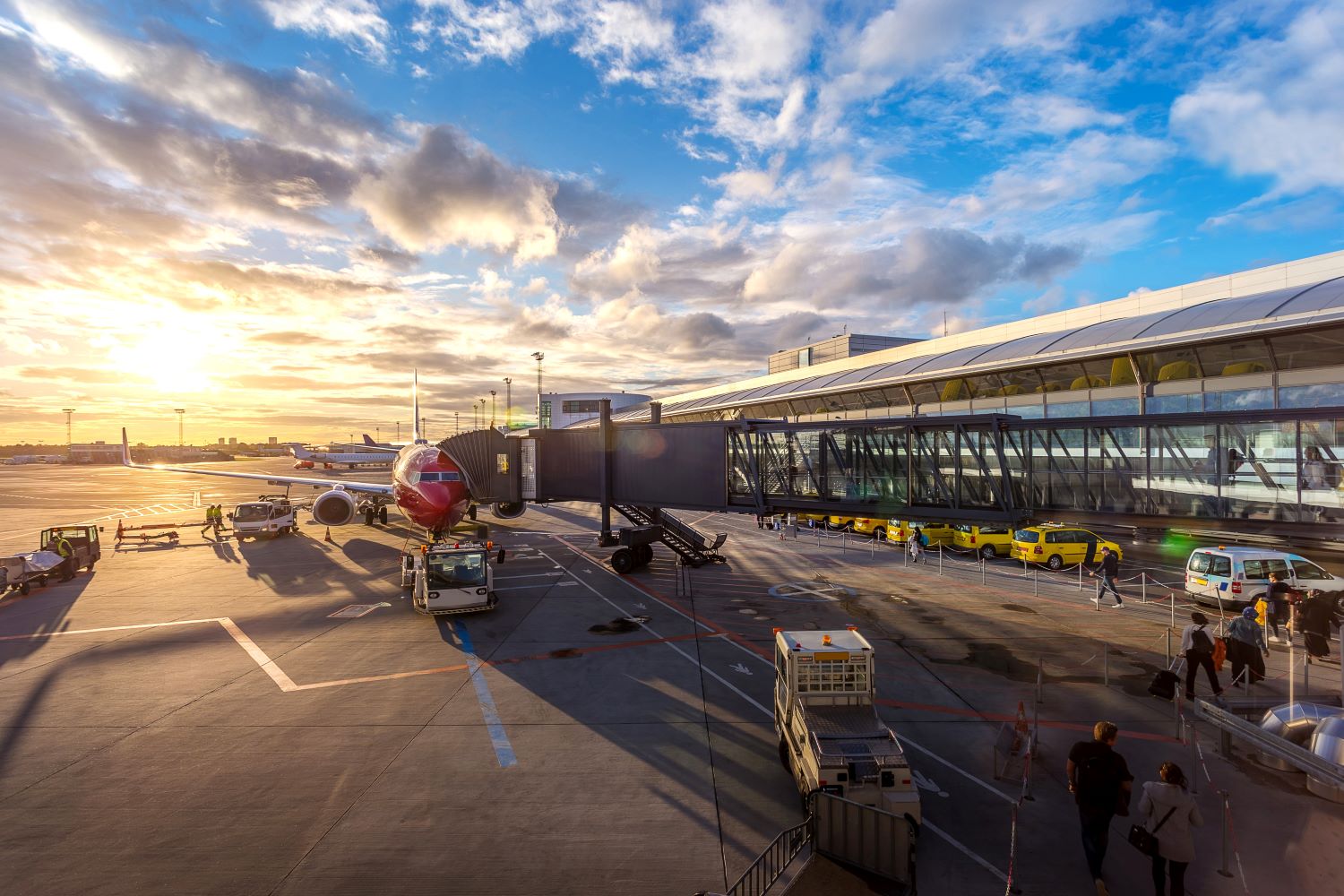Book your complimentary strategic workshop for a tailored ALM/EAM roadmap.
The Need: Minimize Service Disruptions
Airports need to manage complex and highly critical infrastructure from the point of design through to decommissioning. They also need to operate in a highly regulated and safety-critical environment. In addition, airports need to provide a seamless, trouble-free experience for passengers to ensure that the airport will be a preferred gateway for them to begin and end their journey. An airport’s asset performance directly corresponds to customer satisfaction – they must be optimally managed to achieve the best result for the customer and for the airport.
Three elements are inseparable in establishing a solution that is capable of truly providing the required level of asset support to airport operations:
- Asset Lifecycle Management and Enterprise Asset Management – strategies and programs to achieve optimized asset performance.
- Asset data – management and collection of the right data to manage asset reliability over their entire lifecycle.
- Technology – the enabling and use of strategies and data to provide maximum asset performance.
Solutions that truly allow the organization to benefit are created with the end in mind – they meet all of the needs.

The Solution: Strategies, Data and Technology Solutions
Strategies
- Asset Lifecycle Management (ALM)
Airports are extremely dependent on the performance of assets to meet their design specifications to provide successful and reliable operations and minimize disruptions to service. Multiple parties tend to be involved as assets are designed, installed, tagged, commissioned, maintained, and replaced, and if the asset information is not consistently and correctly handled serious problems can result.
An Asset Lifecycle Management strategy defines the asset management policy and associated information management standards that ensure that assets are defined and modeled consistently regardless of who is interacting with them at any point in time. Defining and enforcing these standards from their initial design through the entire lifecycle saves time and effort and drastically reduces the potential for subsequent problems that could cause service disruptions.
- Enterprise Asset Management (EAM)
An EAM strategy is adopted to ensure that the design criteria of the asset is met during operation. It ensures optimization to provide the right amount of maintenance and interaction for the asset – contrary to popular belief, both too little and too much can cause unexpected failure, and therefore waste time and resources.
The EAM strategy should dovetail into the ALM strategy to carry the lifetime performance needs of the asset through its operation and maintenance stages. The governance of the asset management standards continues through decommissioning to make the EAM process as smooth and effective as it can be, improving airport profitability and reliability.
Data Management
Data is the key to understanding and optimizing asset performance. Collecting and standardizing the right data to support the operation is the key to turning data into information that the airport can act on. Airports already collect and generate vast amounts of data every day, from flight schedules and passenger information, and the same approach needs to be applied to an airport’s asset base.
The creation of the ALM and EAM strategies helps to define the type and detail required to optimize the assets and their function in supporting the airport operation. A ‘system of systems’ approach gives clarity and visibility to how the data will be used and exchanged over the asset lifecycle. Common attributes, naming conventions, and usage are key to the data being used in the most effective manner to both support operations and provide key analytics to support business improvement initiatives.
Technologies
Designing a solution with the end in mind will harmonize all elements of the ALM and EAM strategies and manage the airport’s needs, from initial asset design all the way through to decommissioning. By incorporating continuous improvement feedback, flaws and inconsistencies are actively designed out of the process.
Technology performs a key role to facilitate the effective capture and analysis of data, and then realize the potential benefits defined in the ALM and EAM strategies.
- EAM systems – fully integrated EAM asset and work management systems such as IBM Maximo to execute the strategies and optimize asset performance.
- Data capture and processing – SCADA systems, Internet of Things communications, data relationships, data, and system integrations, are brought together by rules-based engines to discover relationships that identify the underlying cause of a symptom.
- Data standardization – the application of rules to properly standardize and categorize data, supporting the operation and creating consistent analytics.
- Digital twins – by creating a virtual depiction of the as-designed and as-built airport environment, and by integrating that depiction with the EAM system, the airport managers and maintainers have all they need to optimize the data collection, review, understanding, and optimization of the airport’s performance for its customers.
- Machine learning – build on ‘basic’ EAM capabilities by adding context-based historic data mining to create a more reliable outcome.
- Artificial intelligence – further defines advanced behaviors and data relationships to uncover additional opportunities to create additional business improvement.
Benefits
The ability to connect the physical and digital airport environments through digital twins offers numerous advantages. For instance:
- Cost Optimization: By analyzing passenger flow, baggage handling, and aircraft movements, airports can identify bottlenecks that improve the customer experience but also optimize maintenance strategies.
- Enhanced Passenger Experiences: Real-time data can be used to improve passenger experiences by providing accurate information about flight status, gate changes, and baggage claim. This results in smoother and more satisfying journeys for travelers.
- Streamlined Operational Efficiency: Digital twins enable airports to simulate various operational scenarios over time, helping to proactively address issues such as runway maintenance, security breaches, or extreme weather events.
- Predictive Maintenance: Airlines and airport operators can use data-driven insights to predict equipment performance impacts and take action to avoid any disruption to operations and the customer experience.
- Connect Operations to Customer Experience: digitalize the airport campus, including airside and land-side, and bring together the power of the digital twin with work and asset management to create a one-stop approach to managing safety, airport regulations (14 CFR Part 139 inspections and NOTAM’s), and asset performance to provide the highest level of service to the passengers, and achieve the greatest level of satisfaction and growth
Embrace the Digital Revolution with Cohesive’s Expertise
Cohesive is steadfastly committed to empowering built-asset organizations to embrace the digital revolution. Their team of digital experts understands the unique demands of the aviation sector, crafting bespoke, outcome-driven digital strategies. By gaining a deep understanding of your business requirements, digital maturity, and specific ways of working, Cohesive empowers you to navigate the intricate digital landscape, unlocking new avenues for sustainable growth.
Leveraging our significant industry expertise, Cohesive provides a clear roadmap for your entire asset management and digital twin journey. From grasping nuanced concepts to delineating their applications in your context, Cohesive’s digital advisory services ensure a seamless transition into the realm of digital twins.
Unlocking Value Through a Comprehensive Workshop
Allow Cohesive to assist you in exploring the value of digital and digital twinning within your business by formulating a digital and strategic roadmap through a comprehensive workshop conducted by our advisory team.
In this strategic workshop, we will:
- Define your company’s key objectives and value drivers across a series of future horizons.
- Explore how digitalization can help relieve the challenges and pain points across your entire asset lifecycle journey.
- Identify and prioritize immediate opportunities for optimization and improvement.
- Develop a customized roadmap for your digital twin journey.
Don’t miss this opportunity to unlock the boundless potential of digital twins and data management in the airport industry. Book your workshop today and let Cohesive guide you towards a prosperous digital future for your organization.








